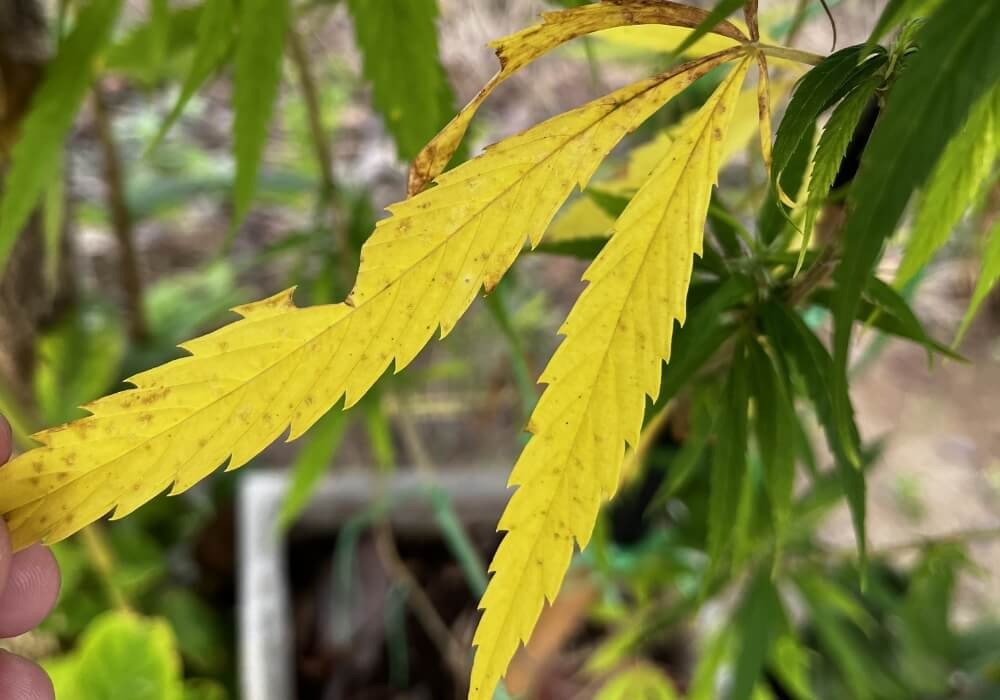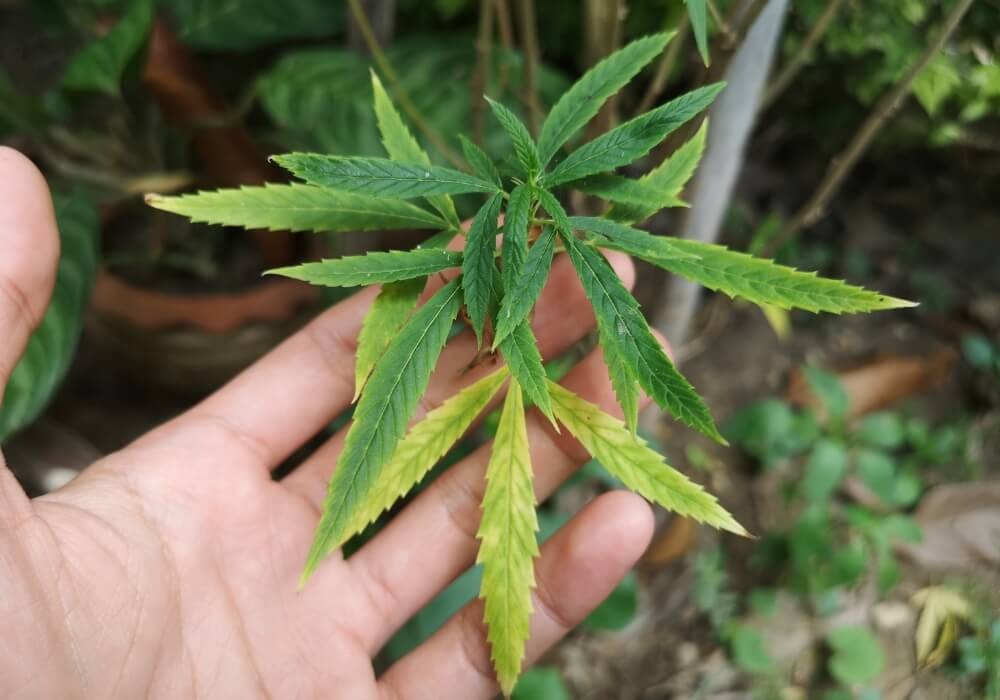Cannabis cultivation, whether indoors or outdoors, demands a keen understanding of the plant’s needs, particularly when it comes to nutrients. Tuna Kush, a beloved hybrid strain known for its potent effects and rich flavor profile, requires special care during its growth cycle. Like any other cannabis strain, Tuna Kush can develop nutrient deficiencies that hinder its growth and affect the final yield. In this blog post, we will walk you through the common nutrient deficiencies in Tuna Kush, how to spot them, and most importantly, how to correct them for optimal growth.
Understanding the Importance of Proper Nutrition for Tuna Kush
Tuna Kush, like other cannabis strains, has specific nutritional needs throughout its growth stages. From seedling to flowering, the right balance of macronutrients (Nitrogen, Phosphorus, Potassium) and micronutrients (Calcium, Magnesium, Iron, etc.) is essential. A lack or excess of any nutrient can lead to problems that affect the overall health of the plant and the quality of the harvest. Nutrient deficiencies, if not addressed early, can have long-lasting effects on the plant’s development.
Signs of Nutrient Deficiencies in Tuna Kush
Before diving into how to correct nutrient deficiencies, it’s crucial to first understand the signs that your Tuna Kush plant might be facing an issue. Nutrient deficiencies often manifest as changes in leaf color, leaf curl, or stunted growth. However, identifying the specific deficiency requires careful observation. Let’s explore the common symptoms of nutrient deficiencies in Tuna Kush.
Yellowing of Leaves (Nitrogen Deficiency)
One of the most noticeable signs of a nitrogen deficiency is the yellowing of older leaves. As the plant struggles to access nitrogen, it will prioritize the younger growth, causing the older leaves to lose their color. Nitrogen is crucial for leaf growth and overall plant development, so a lack of it can result in slower growth and reduced overall vitality.

Solution:
To address nitrogen deficiency, it’s recommended to feed your Tuna Kush with a nitrogen-rich fertilizer. Organic options, such as fish meal or composted manure, can provide a slow release of nitrogen. In the case of hydroponic setups, consider adding a balanced nutrient solution with higher nitrogen content.
Purple Leaves and Stems (Phosphorus Deficiency)
If you notice purple or reddish hues on the leaves or stems of your Tuna Kush plant, it could indicate a phosphorus deficiency. Phosphorus is vital for root development, energy transfer, and overall plant growth. When the plant struggles to take in sufficient phosphorus, it will begin showing these color changes.
Solution:
To correct phosphorus deficiency, switch to a phosphorus-enriched fertilizer. If you’re growing indoors, look for a nutrient mix with a higher middle number in the NPK (nitrogen, phosphorus, potassium) ratio. Organic bone meal is a natural way to boost phosphorus levels for cannabis plants.
Brown, Spotty Leaves (Potassium Deficiency)
Potassium deficiencies typically manifest as browning or spotting on the edges of leaves, starting from the tips. The edges may begin to curl, and the plant may exhibit stunted growth. Potassium plays a critical role in regulating water retention, nutrient uptake, and overall plant metabolism. Without it, Tuna Kush will struggle to develop healthy flowers and leaves.
Solution:
To resolve potassium deficiencies, you can add a potassium-rich fertilizer or supplement such as potassium sulfate or wood ash. For a more organic approach, banana peels are known to release potassium into the soil as they decompose.
Interveinal Chlorosis (Magnesium Deficiency)
Magnesium deficiency shows up as yellowing between the veins of leaves, known as interveinal chlorosis. This issue is most commonly seen in the older leaves first. Magnesium is essential for photosynthesis and overall plant health, and its absence can stunt the plant’s growth and flower production.
Solution:
Magnesium deficiencies can be corrected with Epsom salt (magnesium sulfate). Dissolve a tablespoon of Epsom salt in water and apply it to the plant. Additionally, magnesium-rich fertilizers or supplements should be used to ensure the plant has access to adequate amounts of this essential nutrient.
Iron Deficiency (Yellowing of New Growth)
Iron deficiency is another common issue that can affect Tuna Kush, especially in soils with a high pH. This condition usually causes yellowing between the veins of new leaves while the veins themselves remain green. Iron is crucial for chlorophyll production and overall plant energy production.
Solution:
To remedy iron deficiency, apply a chelated iron solution or iron sulfate. If you’re growing in soil, reducing the pH slightly with sulfur can make iron more available to the plant.
Calcium Deficiency (Curling Leaves)
Calcium is an essential nutrient that helps form cell walls and supports plant structure. In Tuna Kush, a lack of calcium often results in curling or deformed leaves. The leaves may also become brittle, and growth may be stunted.
Solution:
Calcium deficiency can be corrected with the application of calcium nitrate or by adding lime to the soil. If growing in hydroponic systems, consider using a calcium supplement designed specifically for hydroponic setups.
How to Prevent Nutrient Deficiencies in Tuna Kush
While it’s important to know how to spot and fix nutrient deficiencies, the best approach is to prevent them from occurring in the first place. Here are a few steps you can take to ensure your Tuna Kush plants stay healthy and nutrient-rich throughout their lifecycle:
Use a High-Quality Nutrient Mix
Starting with a good quality, balanced nutrient mix is key. Whether you’re growing Tuna Kush in soil or a hydroponic setup, ensure that your nutrient mix contains the right balance of macro and micronutrients. Be mindful of the specific needs of Tuna Kush during its vegetative and flowering stages.
Monitor pH Levels Regularly
pH levels can greatly affect the plant’s ability to absorb nutrients. In cannabis cultivation, a pH range of 6.0 to 7.0 for soil and 5.5 to 6.5 for hydroponic systems is ideal. Regularly checking and adjusting the pH will help prevent nutrient lockout, which can lead to deficiencies.
Avoid Over-Fertilizing
Too much fertilizer can be just as harmful as too little. Over-fertilizing can lead to nutrient burn, a condition where the plant’s roots are overwhelmed by an excess of salts and chemicals. Follow the recommended feeding schedule for your specific nutrient product and adjust as needed based on the plant’s growth stage.
Provide Proper Watering Practices
Under or over-watering can stress the plant and affect nutrient uptake. Ensure that your Tuna Kush plants are getting enough water but not waterlogged. Proper drainage is essential for healthy root growth and nutrient absorption.
Conclusion
Tuna Kush, like all cannabis strains, thrives when it receives the right balance of nutrients throughout its growth cycle. By knowing the common nutrient deficiencies and how to spot them, you can take proactive steps to keep your plants healthy and productive. Whether it’s adjusting your feeding regimen, testing the pH levels, or using specific supplements, taking care of Tuna Kush’s nutritional needs will help you achieve a bountiful harvest. With the right approach, your Tuna Kush plants will flourish, delivering high-quality buds with the rich effects and flavor that this strain is known for.

